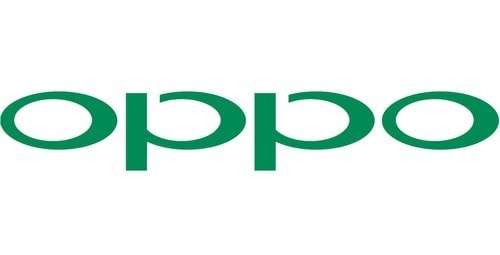The Marketing mix of OPPO analyses the 4Ps of OPPO, including the Product, Price, Place, and Promotions. OPPO Electronics Corporation is known as OPPO, an electronics company of Chinese origins. It is associated with the consumer electronics industry and deals with mobile phones. OPPO is a subsidiary of its parent company, BBK Electronics. It was founded in 2001 by its founder, Chen Mingyong, but was registered in 2004 with the brand name OPPO. Some of its competitors are as follows-
- Samsung
- Apple
- Huawei
- Lenovo-Motorola
- Xiaomi
- LG
- ZTE
- Micromax
- iberry
About OPPO
- Type: Public Company
- Industry: Consumer electronics
- Founded: 2001
- Founder: Tony Chen
- Headquarters: Dongguan, Guangdong, China
- Area served: Worldwide
- Key people: Chen Mingyong (Chairman) and Pete Lau (CEO)
- Number of employees: 76,000
Table of Contents
OPPO Product Strategy
OPPO is one of the leading global names in the mobile phone industry. It deals in designing, manufacturing, and marketing smartphone brands.
At its onset, it was a technology and electronics organization focusing on MP3 players, but in 2008, it diversified its portfolio and stepped into a target market segment of smartphones. It created new and better opportunities by including Blu-ray players, smartphones, and other electronic devices in its kit.
OPPO’s product mix includes beautiful features and a diverse range of smartphones, audio products, and wearables.
The new Product Mix of OPPO in 2023 is as follows (Source).
- Smartphones: OPPO offers a variety of smartphone models catering to the market share and different user needs. Their range includes models like: OPPO Find N3 and OPPO Find N3 Flip; OPPO Find X5 Pro; OPPO Reno11 Series (including Reno11 and Reno11 Pro); OPPO A Series (such as A53 4G, A15, A12e, A72); OPPO Reno Series (including Reno4 Z 5G, Reno4 Pro 5G); OPPO Find X2 Series (like Find X2 Lite, Find X2 Neo); OPPO Ace Series; Realme Series (including various models under the Realme Narzo, Realme Q, Realme V, and Realme X series); Other models like OPPO A92s, OPPO A12, OPPO A52, OPPO F11, OPPO AX7, OPPO K3, and more. These smartphones cater to various market segments, from budget-friendly options to premium flagship models, each offering different features and specifications to suit user preferences.
- Audio Products: OPPO’s audio product lineup includes: OPPO Enco Air3 Pro; OPPO Enco Air3; OPPO Enco Air2 Pro; OPPO Enco Air2; OPPO Enco Buds2; OPPO Enco Buds. These products include various earbuds offering features like noise cancellation, high-quality audio, and comfortable fit, designed to complement the smartphone experience of young consumers.
- Wearables: In the wearables segment, OPPO offers products such as: OPPO Watch Free; OPPO Band 2. These wearables focus on fitness tracking, health monitoring, and seamless integration with OPPO smartphones.
OPPO Place Strategy
OPPO has spread its international presence to several countries, and its products are readily available in nearly twenty-one countries, including Africa, the Middle East, South Asia, Southeast Asia, Europe, Australia, and the United States. Its headquarters is in Dongguan, China. OPPO has formed several divisions based on geographical locations to design and meet specific requirements of that area like OPPO Bangladesh, OPPO Pakistan, OPPO Sri Lanka, OPPO India, OPPO Thailand, OPPO Vietnam, OPPO Malaysia, OPPO Philippines, OPPO Myanmar, and OPPO China.
It also has a division, OPPO Digital, which operates independently and is based in Mountain View in the United States. OPPO has complete control over digital marketing through its widespread and robust supply chain, which includes the distribution of products from its manufacturing plants to customers via online stores, mobile stores, supermarkets, hypermarkets, and malls.
OPPO’s place strategy can be summarized in the following points:
- Global Presence and Market Expansion: OPPO has established a significant global footprint, with operations in over 60 countries. This includes robust market control in India and a considerable influence in Southeast Asia. The brand’s approach to market expansion reflects its adaptability and responsiveness to diverse consumer needs across different regions.
- Diverse Product Accessibility: The company ensures that its products, ranging from smartphones to augmented reality devices and fitness trackers, are readily accessible in various markets. This is achieved through online and offline distribution channels, including mobile stores, supermarkets, hypermarkets, and shopping malls.
- Localized Strategy: OPPO’s strategy involves tailoring its offerings and marketing tactics to suit the unique demands of each market. This localized approach allows them to connect more effectively with consumers in different regions, catering to their preferences and cultural nuances.
- Innovation-Driven Approach: OPPO’s commitment to innovation is evident in its product development and marketing strategies. The company continually introduces cutting-edge products like the Oppo Band and Air Glasses 2, which enhance customer experiences and strengthen its position in the technology market.
- Strategic Partnerships and Marketing: OPPO engages in strategic collaborations and sponsorships to enhance its brand visibility and appeal. This includes partnerships with celebrities, sports organizations, and other influential entities, which help the brand resonate more with its target audience globally.
OPPO Pricing Strategy
OPPO quickly carved a distinct name and faces stiff competition from existing and new players. It has held its own because of intelligent technology, meticulous designs, and pricing policies. OPPO strives to capture and impress the younger generation, seeking trendsetters offering unique user experiences. The company has targeted the high-end smartphone market by offering attractive models that bring value to customers and generate revenue and revenues. OPPO has adopted a mid-premium pricing policy and kept its product prices higher than similar products of its rival brands. It has successfully assured its customers of value-based pricing and created a niche market.
OPPO’s pricing and marketing strategy demonstrates a keen understanding of market dynamics and consumer psychology, aligning with its brand positioning as a provider of innovative, high-quality technology products. Here’s a breakdown of their pricing approach:
- Value-Based Pricing: OPPO positions its products in the mid to high-end market, setting prices that reflect the perceived value of their offerings. By integrating advanced features and high-quality designs in their devices, OPPO justifies a price point slightly higher than comparable products from other manufacturers. This strategy establishes OPPO as a premium brand and appeals to consumers seeking a balance between cost and quality.
- Competitive and Market-Oriented Pricing: In the highly competitive smartphone market, OPPO smartly prices its products by considering both the competition and the target market’s price sensitivity. While it competes with high-end brands on technology and features, OPPO remains accessible to a broader consumer base by not positioning itself in the highly high-end price segment. This approach helps the brand to cater to a broader demographic, ranging from tech-savvy youngsters to more mature users seeking reliable and feature-rich phones.
- Psychological Pricing: OPPO often employs psychological pricing strategies to make their products more attractive. For instance, setting prices just below a round number (like pricing a product at $499 instead of $500) can make a significant difference in consumer perception, making the price appear substantially lower than it is.
- Segmented Pricing Strategy: Recognizing the diverse needs of its customer base, OPPO employs a segmented pricing strategy. This involves offering different models at various prices to cater to market segments. From budget-friendly options for cost-conscious consumers to more expensive models with advanced features for tech enthusiasts, OPPO ensures something for everyone.
- Dynamic Pricing Based on Market Trends and Consumer Feedback: OPPO stays agile in its pricing, adjusting according to market trends, consumer feedback, and competitive dynamics. This dynamic pricing strategy allows OPPO to remain competitive and relevant in rapidly evolving markets, responding quickly to changes in consumer preferences and technological advancements.
OPPO Promotion Strategy
OPPO has strived to promote its products with the help of an aggressive marketing policy. It has launched several ad campaigns that highlight its innovative features and are shown via television, newspapers, and billboards and in its social media platforms via Facebook, Twitter, Blogs, Instagram, and YouTube. The brand realizes the impact of star power. It has roped Indian actors Sonam Kapoor and Hrithik Roshan as brand ambassadors and cricketer Yuvraj Singh to act in its commercials.
Luhan and Yang Mi have become ambassadors in their native country, China. During brand promotion for its launch in Thailand, it entered into a deal with a popular boyband from Korea, 2 PM, to prepare a launching song. It has entered into a sponsorship agreement, such as a deal with the International Cricket Council to become its mobile partner and FC Barcelona to become its official partner.
Some Recent Video ads and Print ads for OPPO are:
Liked this post? Check out the complete series on Marketing Mix

